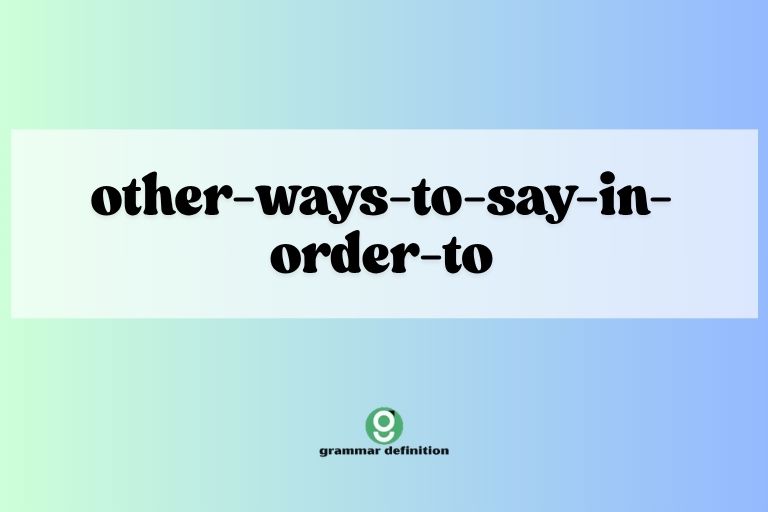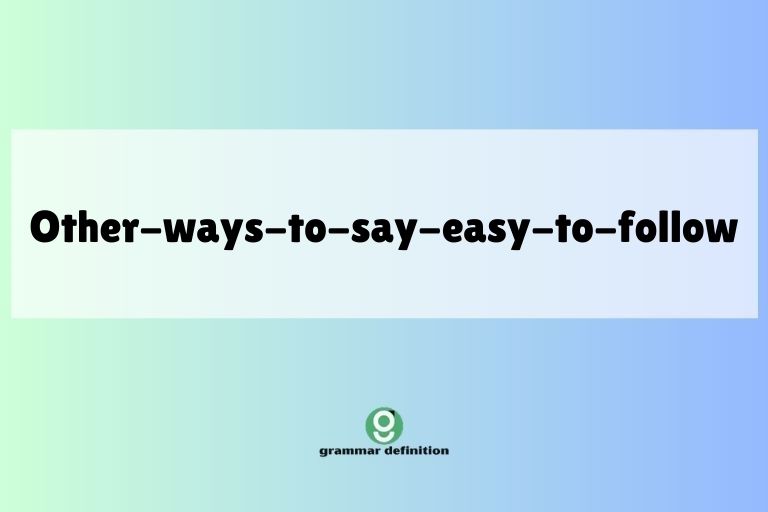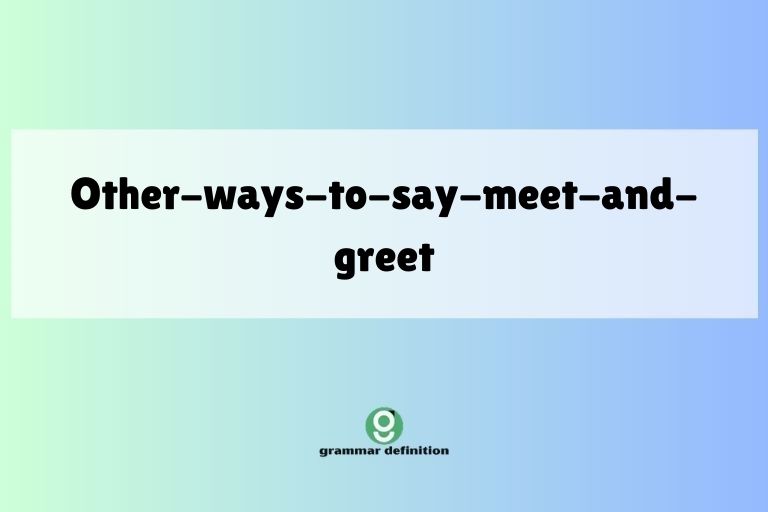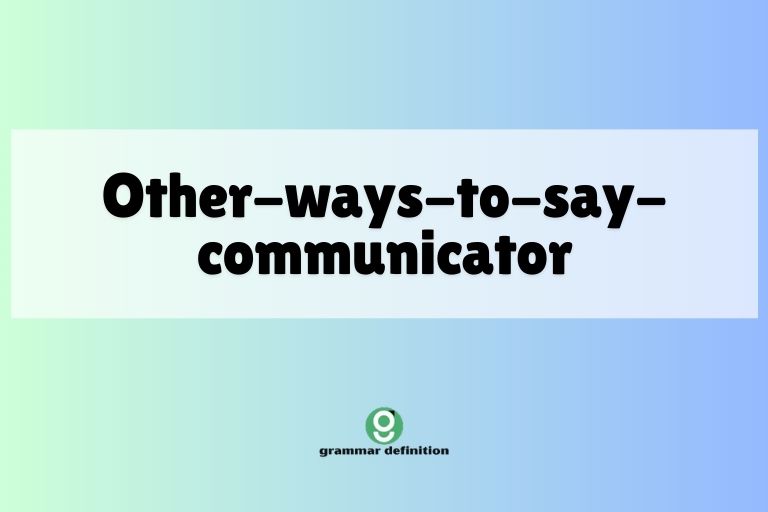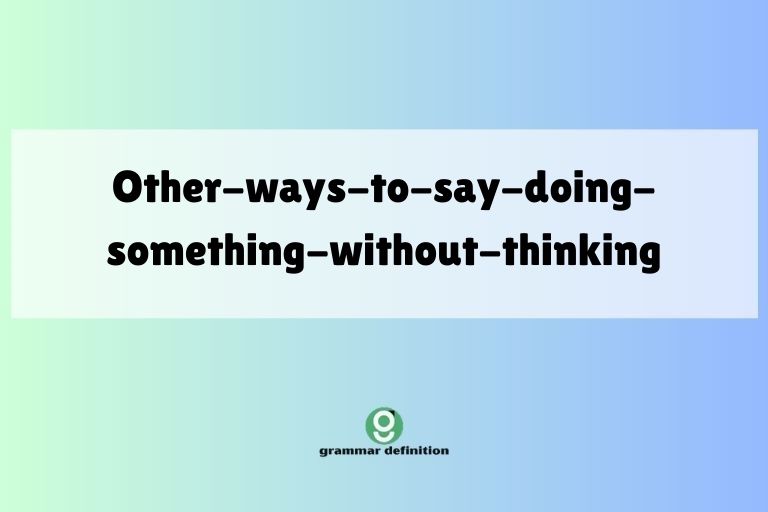Other Ways to Say “Good Job”: Expanding Your Positive Reinforcement Vocabulary

Positive reinforcement is a powerful tool for motivation and encouragement, whether you’re teaching a child, managing a team, or even training a pet. However, relying on the same phrases like “good job” can become repetitive and lose its impact.
Expanding your vocabulary with diverse and specific praise not only keeps your feedback fresh but also allows you to highlight particular strengths and improvements. This article explores a wide range of alternative expressions to “good job,” providing examples and practical exercises to help you effectively use them in various contexts.
By mastering these alternative phrases, you can become a more effective communicator and motivator, fostering a positive and productive environment.
Table of Contents
- Introduction
- Definition of Positive Reinforcement
- Structural Breakdown of Reinforcement Phrases
- Types and Categories of Positive Reinforcement Phrases
- Examples of Positive Reinforcement Phrases
- Usage Rules for Effective Positive Reinforcement
- Common Mistakes to Avoid
- Practice Exercises
- Advanced Topics in Positive Reinforcement
- Frequently Asked Questions
- Conclusion
Definition of Positive Reinforcement
Positive reinforcement is a principle in behavioral psychology that involves providing a stimulus or reward after a desired behavior to increase the likelihood of that behavior occurring again in the future. It’s a fundamental concept used in parenting, education, management, and even animal training. The key is to make the reward contingent upon the desired behavior; in other words, the reward should only be given when the behavior is exhibited.
Positive reinforcement differs from negative reinforcement, which involves removing an undesirable stimulus to increase a behavior. It also differs from punishment, which aims to decrease a behavior by introducing an unpleasant stimulus or removing a pleasant one. Positive reinforcement focuses on building positive habits and encouraging desired actions through rewards and praise.
The effectiveness of positive reinforcement depends on several factors, including the timing of the reinforcement, the consistency of its application, and the value of the reward to the individual. A well-chosen and consistently applied system of positive reinforcement can significantly impact motivation, learning, and overall performance.
It’s a powerful tool for shaping behavior and fostering a positive environment.
Structural Breakdown of Reinforcement Phrases
Positive reinforcement phrases can be broken down into several key structural elements. Understanding these elements can help you create more effective and personalized praise.
1. The Compliment: This is the core of the praise, expressing approval or admiration. It can be a simple adjective (e.g., “Excellent!”) or a more elaborate statement (e.g., “That was a fantastic effort!”).
2. The Behavior: Specifically mentioning the behavior you are reinforcing is crucial. This helps the individual understand exactly what they did well and encourages them to repeat that behavior. For example, instead of saying “Good job,” say “Good job on completing the report on time.”
3. The Impact (Optional): Describing the positive impact of the behavior can further enhance the reinforcement. This helps the individual understand the value of their actions and how they contribute to a larger goal. For example, “Good job on completing the report on time; it really helped us stay on schedule.”
4. The Encouragement (Optional): Adding a word of encouragement can further motivate the individual to continue performing well. For example, “Good job on completing the report on time; it really helped us stay on schedule. Keep up the great work!“
Understanding these structural elements allows you to craft more specific and impactful reinforcement phrases. By clearly identifying the behavior, its impact, and offering encouragement, you can maximize the effectiveness of your praise.
Types and Categories of Positive Reinforcement Phrases
There are various types of positive reinforcement phrases, each serving a slightly different purpose. Categorizing them can help you choose the most appropriate phrase for a given situation.
General Praise
General praise is broad and non-specific, offering overall encouragement. While it can be useful for initial encouragement, it’s generally less effective than specific praise.
Specific Praise
Specific praise focuses on a particular behavior or accomplishment. It provides clear and direct feedback, making it more impactful and memorable.
Effort Praise
Effort praise recognizes the hard work and dedication put into a task, regardless of the outcome. This type of praise is particularly useful for encouraging perseverance and resilience.
Progress Praise
Progress praise acknowledges the improvement made over time. It highlights the individual’s growth and encourages continued development.
Skill Praise
Skill praise focuses on the individual’s abilities and talents. It reinforces their strengths and builds confidence.
Attitude Praise
Attitude praise recognizes a positive mindset or approach to a task. It encourages a growth mindset and a willingness to learn.
Comparative Praise
Comparative praise compares the individual’s current performance to their past performance. It highlights their progress and reinforces their improvement.
Examples of Positive Reinforcement Phrases
Here are numerous examples of positive reinforcement phrases, organized by category, to help you expand your vocabulary and provide more effective feedback.
General Praise Examples
These phrases are suitable for providing overall encouragement and positive feedback. They are simple and versatile but should be complemented with more specific praise whenever possible.
| Phrase | Context |
|---|---|
| Well done! | After a task is completed successfully. |
| Great work! | Upon seeing good progress on a project. |
| Fantastic! | In response to a creative idea. |
| Excellent! | When someone demonstrates a skill proficiently. |
| Superb! | After a particularly impressive performance. |
| Awesome! | When something exceeds expectations. |
| Wonderful! | To show appreciation for a helpful action. |
| Amazing! | When someone overcomes a challenge. |
| Terrific! | To acknowledge a job well done. |
| Outstanding! | After an exceptional achievement. |
| Good going! | To encourage continued effort. |
| That’s great! | To affirm someone’s decision. |
| You’re doing well! | To provide ongoing encouragement. |
| Perfect! | When something is executed flawlessly. |
| Impressive! | To acknowledge significant progress. |
| Remarkable! | After an extraordinary accomplishment. |
| Splendid! | To express delight at an outcome. |
| Marvelous! | When witnessing a skillful display. |
| Sensational! | To celebrate a significant success. |
| Top-notch! | To commend high-quality work. |
| Exceptional! | To recognize extraordinary effort. |
| First-rate! | To praise excellent performance. |
| Tremendous! | To acknowledge substantial improvement. |
| Incredible! | To express astonishment at achievement. |
| Unbelievable! | When results are surprisingly good. |
| Exquisite! | To praise a delicate skill or talent. |
| Stunning! | To express admiration for beauty or skill. |
| Brilliant! | To commend intelligence or cleverness. |
| Fabulous! | To generally praise something enjoyable. |
Specific Praise Examples
These phrases provide targeted feedback on specific actions or accomplishments. They are more effective than general praise because they clearly identify what the individual did well.
| Phrase | Context |
|---|---|
| I really appreciate how you handled that difficult customer. | After observing excellent customer service skills. |
| Your presentation was very well-organized and informative. | After a successful presentation. |
| I noticed you helped your classmate with their homework; that was very kind. | Upon witnessing an act of kindness. |
| The way you solved that problem was very creative. | After seeing an innovative solution. |
| Your attention to detail on this project is impressive. | When reviewing meticulous work. |
| I liked how you took the initiative to start the project early. | To acknowledge proactive behavior. |
| Your communication skills are improving significantly. | To highlight progress in communication. |
| I admire your ability to stay calm under pressure. | When someone handles stress well. |
| You demonstrated excellent teamwork in that group project. | To praise collaborative skills. |
| Your insightful questions during the meeting were very helpful. | To commend thoughtful contributions. |
| The report you wrote was clear, concise, and well-researched. | After reading a well-written report. |
| You showed great leadership qualities in guiding the team. | To acknowledge leadership skills. |
| Your problem-solving skills are excellent; you found a creative solution. | To praise effective problem-solving. |
| I appreciate your willingness to help others on the team. | When someone is a helpful team player. |
| Your positive attitude is contagious and uplifting. | To acknowledge a positive attitude. |
| You managed the project efficiently and effectively. | To praise project management skills. |
| Your presentation skills are improving with each presentation. | To highlight improvement in presentation skills. |
| I noticed you took the time to explain the concept to your colleague. | When someone demonstrates patience and teaching skills. |
| Your dedication to this project is truly commendable. | To praise commitment and dedication. |
| You handled that situation with grace and professionalism. | To acknowledge professional behavior. |
| Your ability to think critically is a valuable asset to the team. | To praise critical thinking skills. |
| I admire your commitment to continuous learning and improvement. | To acknowledge a growth mindset. |
| You consistently deliver high-quality work on time. | To praise reliability and quality. |
| Your creativity and innovation are inspiring. | To acknowledge innovative ideas. |
| I appreciate your attention to detail; it makes a big difference. | When someone is meticulous. |
| You’re becoming an expert in this area; your knowledge is impressive. | To praise developing expertise. |
| Your ability to adapt to changing circumstances is remarkable. | To acknowledge adaptability. |
| I value your contributions to the team; you bring a unique perspective. | To praise valuable team contributions. |
| You consistently go above and beyond what is expected. | To praise exceeding expectations. |
Effort Praise Examples
These phrases acknowledge the effort and hard work put into a task, regardless of the outcome. They are particularly useful for encouraging perseverance and resilience.
| Phrase | Context |
|---|---|
| I can see you put a lot of effort into this, even though it was challenging. | When someone has worked hard despite difficulties. |
| I appreciate your dedication to completing this task, even when things got tough. | To acknowledge dedication in the face of adversity. |
| Your hard work is really paying off; I can see the progress you’re making. | When effort leads to visible improvement. |
| I admire your persistence in tackling this difficult problem. | To praise persistence in problem-solving. |
| You’ve shown a lot of commitment to improving your skills. | To acknowledge commitment to self-improvement. |
| I can tell you’ve been working hard on this, and it shows. | When hard work is evident in the results. |
| Your willingness to put in the extra hours is truly appreciated. | To acknowledge extra effort. |
| I admire your determination to succeed, even when faced with setbacks. | To praise determination in overcoming obstacles. |
| You’ve really pushed yourself on this project, and it’s impressive. | When someone has gone above and beyond. |
| I appreciate your commitment to excellence in everything you do. | To acknowledge a commitment to high standards. |
| Your efforts to learn this new skill are commendable. | To praise the effort made in learning. |
| I can see how much thought and care you put into this. | When the effort is apparent in the quality of work. |
| Your drive to improve is inspiring. | To praise a desire for self-improvement. |
| I appreciate your willingness to take on challenging tasks. | To acknowledge courage in tackling difficulties. |
| Your commitment to this project is evident in the quality of your work. | When commitment is reflected in the results. |
| I admire your dedication to achieving your goals. | To praise dedication to achieving long-term objectives. |
| You’ve put in a tremendous amount of effort, and it’s paying off. | When the effort has resulted in visible success. |
| I appreciate your willingness to go the extra mile. | To acknowledge the willingness to exceed expectations. |
| Your perseverance in the face of adversity is truly inspiring. | To praise resilience and determination. |
| I can see you’ve been working diligently, and it’s making a difference. | When consistent hard work is producing noticeable results. |
| Your enthusiasm and energy are contagious. | To praise a positive and motivated attitude. |
| I admire your passion for this project, it shines through in your work. | To acknowledge passion and enthusiasm. |
| You’ve shown great initiative in tackling this challenge. | To praise proactive behavior. |
| I can see that you’ve put a lot of heart into this, which makes all the difference. | When the effort has been invested with genuine care. |
| Your commitment and hard work are an example for others to follow. | To praise an excellent role model in work ethic. |
| I appreciate your unwavering focus on this project, even when it got difficult. | To acknowledge sustained concentration and resolve. |
| Your efforts to stay positive and motivated are truly commendable. | To praise a positive attitude and perseverance. |
| I admire your grit and determination in the face of setbacks. | To praise courage and tenacity under pressure. |
| You’ve demonstrated exceptional commitment to this task, even with its complexities. | To acknowledge extraordinary dedication and commitment. |
Usage Rules for Effective Positive Reinforcement
To ensure positive reinforcement is effective, it’s important to follow certain usage rules:
1. Be Specific: As mentioned earlier, specific praise is more effective than general praise. Clearly identify the behavior you are reinforcing.
2. Be Timely: Provide reinforcement as soon as possible after the desired behavior. This helps the individual make a clear connection between their actions and the reward.
3. Be Consistent: Consistently reinforce desired behaviors to establish them as habits. Inconsistency can lead to confusion and frustration.
4. Be Sincere: Praise should be genuine and authentic. Insincere praise can be counterproductive and damage trust.
5. Tailor the Reinforcement: Consider the individual’s preferences and needs when choosing the type of reinforcement. What is rewarding for one person may not be rewarding for another.
6. Focus on Effort and Progress: Emphasize effort and progress, not just outcomes. This encourages a growth mindset and resilience.
7. Avoid Overuse: Excessive or indiscriminate praise can diminish its impact. Use praise strategically and purposefully.
8. Combine with Other Strategies: Positive reinforcement is most effective when combined with other strategies, such as clear expectations, constructive feedback, and opportunities for growth.
Common Mistakes to Avoid
Several common mistakes can undermine the effectiveness of positive reinforcement:
1. Vague Praise: Saying “Good job” without specifying what was good about it. Correct: “Good job on completing the report on time.” Incorrect: “Good job.”
2. Insincere Praise: Offering praise that doesn’t feel genuine. This can damage trust and credibility.
3. Delayed Praise: Providing praise too long after the behavior occurred. The connection between the action and the reward becomes weaker.
4. Inconsistent Praise: Sometimes praising a behavior and sometimes ignoring it. This can lead to confusion and frustration.
5. Overusing Praise: Praising every minor action, which can diminish the value of praise overall.
6. Focusing Only on Outcomes: Neglecting to acknowledge effort and progress, even when the outcome is not perfect.
7. Using Praise Manipulatively: Using praise to control or manipulate others, rather than to genuinely acknowledge their efforts and achievements.
8. Comparing Individuals Publicly: Publicly comparing one person’s performance to another’s can create resentment and undermine morale.
Practice Exercises
Test your understanding of positive reinforcement with these practice exercises.
| Question | Answer |
|---|---|
| 1. A student completes a challenging math problem correctly. What’s a specific praise phrase you could use? | That’s excellent! I noticed how you used the formula to solve the problem correctly. |
| 2. An employee stays late to help a colleague finish a project. What’s an appropriate praise phrase? | I really appreciate you staying late to help. That was very generous of you, and it helped the team meet the deadline. |
| 3. A child tries a new sport but doesn’t succeed immediately. What’s an effort-focused praise phrase? | I can see you put a lot of effort into trying the new sport. It takes courage to try something new, and I’m proud of you for giving it a shot. |
| 4. A team member improves their presentation skills over time. What’s a progress-focused praise phrase? | Your presentation skills have improved significantly since the last time. You’re becoming a more confident and engaging speaker. |
| 5. A colleague offers a creative solution to a problem. What’s a skill-focused praise phrase? | That was a very creative solution to the problem! Your problem-solving skills are truly impressive. |
| 6. A student maintains a positive attitude despite facing challenges. What’s an attitude-focused praise phrase? | I admire your positive attitude, even when things get tough. Your optimism is contagious and inspiring. |
| 7. An employee consistently delivers high-quality work. What’s a general praise phrase you could use? | Your work is consistently top-notch. Keep up the great job! |
| 8. A child shares their toys with a sibling. What’s an appropriate praise phrase? | It was very kind of you to share your toys with your sibling. That shows you’re thoughtful and caring. |
| 9. A team member volunteers to take on a new responsibility. What’s an appropriate praise phrase? | I appreciate you volunteering to take on this new responsibility. Your willingness to step up is invaluable to the team. |
| 10. A student shows improvement in their writing skills. What’s a progress-focused praise phrase? | Your writing skills have improved a lot. I noticed how you’re using more descriptive language and organizing your thoughts more clearly. |
Advanced Topics in Positive Reinforcement
For advanced learners, consider these more complex aspects of positive reinforcement:
1. Shaping: Gradually reinforcing successive approximations of a desired behavior. This is useful for teaching complex skills.
2. Token Economy: Using tokens as secondary reinforcers that can be exchanged for desired rewards. This is often used in educational and therapeutic settings.
3. Intermittent Reinforcement: Reinforcing a behavior only some of the time. This can make the behavior more resistant to extinction.
4. Differential Reinforcement: Reinforcing one behavior while extinguishing another. This is useful for replacing undesirable behaviors with more desirable ones.
5. Self-Reinforcement: Individuals learn to reinforce their own behaviors. This promotes self-regulation and intrinsic motivation.
Frequently Asked Questions
Here are some frequently asked questions about positive reinforcement:
1. Is positive reinforcement the same as bribery? No. Bribery involves offering a reward to influence someone to do something unethical or against their values. Positive reinforcement, on the other hand, is used to encourage positive behaviors and skills.
2. Can positive reinforcement be used with adults? Absolutely. Positive reinforcement is effective for people of all ages. It can be used in the workplace, in relationships, and in personal development.
3. How often should I use positive reinforcement? It depends on the individual and the behavior. Initially, consistent reinforcement is important to establish the behavior. Over time, you can gradually decrease the frequency of reinforcement.
4. What if the person doesn’t respond to my praise? It’s possible that the praise is not meaningful to them. Try to identify what they value and tailor your reinforcement accordingly. It’s also important to ensure that your praise is sincere and specific.
5. Can positive reinforcement be used to change negative behaviors? Yes, but it’s more effective when combined with other strategies, such as setting clear expectations and providing constructive feedback. Focus on reinforcing the desired alternative behavior.
6. What are some non-verbal ways to provide positive reinforcement? Non-verbal cues such as smiling, nodding, giving a thumbs-up, or offering a high-five can also be effective forms of positive reinforcement.
7. How do I avoid making praise sound insincere? Be genuine in your appreciation and focus on specific behaviors or accomplishments. Avoid using generic phrases and try to tailor your praise to the individual.
8. Is it okay to use positive reinforcement in competitive situations? Yes, but it’s important to focus on effort and sportsmanship, not just winning. Praise individuals for their hard work, dedication, and positive attitude, regardless of the outcome.
Conclusion
Mastering alternative ways to say “good job” is a crucial step in becoming a more effective communicator and motivator. By understanding the different types of positive reinforcement phrases and applying them strategically, you can create a more positive and productive environment for yourself and others.
Remember to be specific, sincere, and consistent in your praise, and to tailor your reinforcement to the individual’s needs and preferences. Positive reinforcement is a powerful tool for shaping behavior and fostering a growth mindset.
Continue to practice using these alternative phrases in your daily interactions, and observe the positive impact they have on motivation, learning, and overall performance. By expanding your vocabulary and refining your approach, you can unlock the full potential of positive reinforcement and create a more rewarding and fulfilling experience for everyone involved.
Remember, consistent and thoughtful application of these techniques can lead to significant improvements in behavior and attitude, fostering a culture of encouragement and success.

